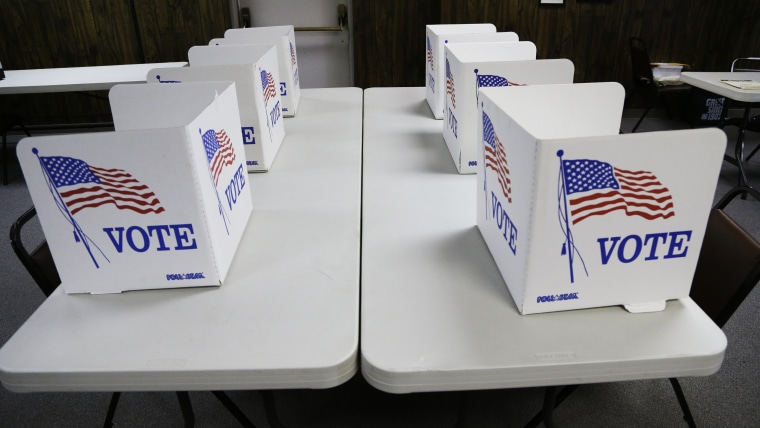About a week ago at this time, polls showed Donald Trump in a much stronger position in the presidential race, benefiting from a modest post-convention bump in the polls. The data came with an obvious caveat: the picture was temporary. What would the landscape would look like after both parties' conventions were over?
This morning, the answer to that question is coming into sharper focus. CBS News, for example, released these results this morning.
Forty-six percent of voters nationwide say they'll vote for Clinton in November, while 39 percent say they'll back Trump. The race was tied last week after the Republican convention. Clinton led by a similar margin in June. Clinton got a four-point bounce after her party's convention, compared to a two-point bump for Trump after his convention. When compared to previous Democratic presidential nominees, Clinton's bounce is similar to those President Obama got in 2012 and 2008, but short of the 13-point bounce her husband, Bill Clinton, received in 1992.
That last point, about 1992, comes with its own asterisk: Ross Perot dropped out of the race during the Democratic convention that year, which exaggerated then-Gov. Clinton's bounce.
A report from Public Policy Polling, released yesterday, also shows Hillary Clinton benefiting from a post-convention bump in public support. In a head-to-head match-up, PPP found the Democratic nominee leading Trump, 50% to 45%, and that five-point advantage remains intact when third-party candidates are added to the mix.
As for the averages, which are worth keeping in mind while scrutinizing any individual poll, the Huffington Post's aggregator shows Clinton ahead, 46.6% to 42.5% (a week ago at this time, her lead was 0.7%), while RealClearPolitics' aggregator shows Clinton up, 44.9% to 42.7% (a week ago, RCP showed Trump leading by 0.2%).
The New York Times' prediction model now shows Clinton with a 70% chance of winning the election, up slightly from 68% last Monday morning. FiveThirtyEight's "polls-plus" model -- which factors in economic data, historical trends, etc. -- shows Clinton with a 60.9% chance of success (up from 57.8% a week ago). FiveThirtyEight also has a "polls-only" model that focuses exclusively on survey data, and it gives Clinton a 51% probability (which is actually down a little from 53.5%).
It's important to keep in mind, as we discussed last week, that this is a volatile period for polling. Clinton's post-convention bounce may serve as a morale boost among her supporters who felt glum a week ago at this time, but bounces often fade.
This was a competitive presidential race before the conventions, and it's likely to remain competitive for a while.
